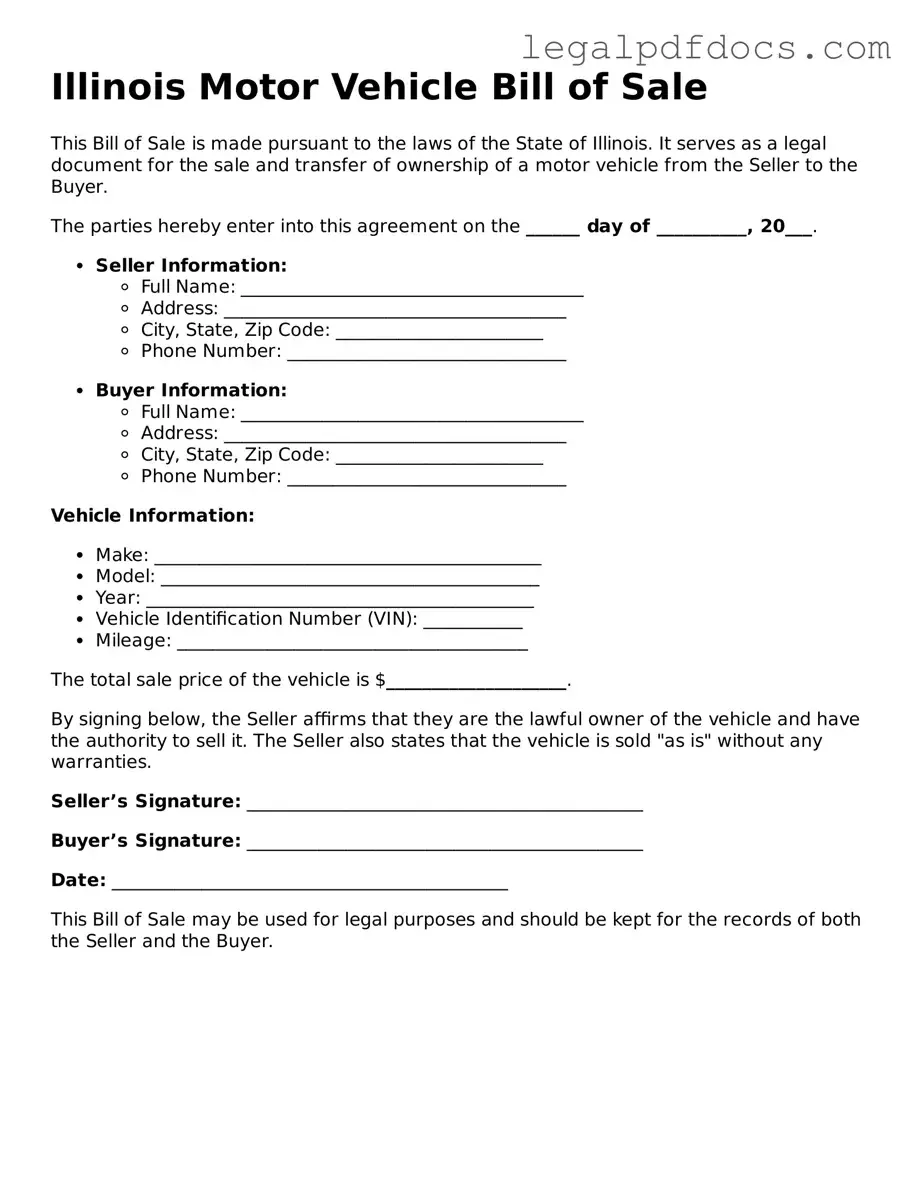Official Motor Vehicle Bill of Sale Form for Illinois
The Illinois Motor Vehicle Bill of Sale form is a legal document that records the transfer of ownership of a vehicle from one party to another. This form serves as proof of the sale and includes essential details such as the vehicle's identification number, sale price, and the names of both the buyer and seller. Completing this form is crucial for a smooth transaction and proper registration; click the button below to fill out the form.
Open Motor Vehicle Bill of Sale Editor Here
